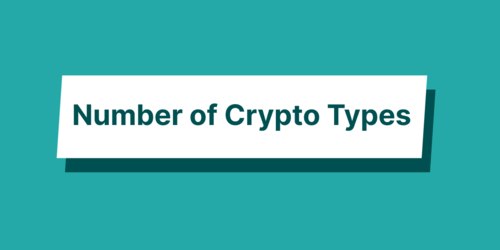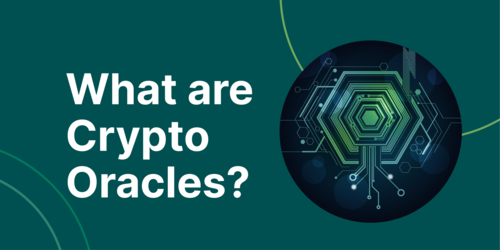One of the major highlights in Chainlink’s 2022 roadmap is the Chainlink Cross-Chain Interoperability Protocol (CCIP). With the CCIP, Chainlink hopes to solve the interoperability issue plaguing smart contract blockchains.
The Blockchain Interoperability Issue
Smart contract platforms control a large portion of the total cryptocurrency market capitalization. These past few years have seen a steep growth in smart contract platforms, each with unique features and shortcomings. In what has become a phenomenon, one chain solves the problem of the other but still possesses its own shortcomings.
A majority of new developments in this space are channelled towards creating a fix for these shortcomings and creating efficient communication between these platforms and the decentralized applications built on them.
Cross-chain technologies’ main purpose is to develop facilities that enable the exchange of information between different blockchains. Cross-chain bridges are unarguably the most prominent cross-chain technology. Through cross-chain bridges, cryptocurrencies, NFTs and other data can be migrated from one blockchain to the other.
Cross-chain bridges provide frank services – you can truly move your tokens to a different blockchain using bridge facilities. But it is far from solving the interoperability issue. In addition, it comes with tons of security and user experience issues. A Chainalysis report estimates that over $2 billion has been lost in cross-chain bridge exploitations in the first three quarters of 2022 alone. Bridging technologies are complicated and most times leave room for exploitation.
Besides the security lapses, cross-chain bridges are still underdeveloped and only useful for asset bridging. This, in fact, is still miles away from establishing a real ‘communication’ between blockchains. True interoperability between blockchains will enable one chain to use the facilities of the other. Not just exchange information recorded on their ledger.
Chainlink’s CCIP
Currently, Chainlink’s oracle protocol is used to provide price feeds on DeFi platforms across multiple smart contract blockchains. Hundreds of DeFi platforms on different blockchains with over $20 billion in cumulative value locked are secured by Chainlink’s Oracle network. The Chainlink CCIP applies this secure consensus mechanism to create true communication between blockchains.
This communication goes beyond the exchange of assets, CCIP creates real communication between blockchains. Through the CCIP, blockchains will be able to utilize each other’s facilities. This includes security infrastructure, scalability infrastructure, transaction processing facilities, and many other features.
Developers building decentralized applications can leverage the Chainlink CCIP to piece together features of different blockchains in one smart contract. The idea is to construct a smart contract that is in essence multiple contracts on multiple chains interoperating with one another. With this, developers can build an application that enjoys one blockchain’s speed while utilizing the security system of another blockchain and the scalability facilities of other chains.
Applications powered by the CCIP will ‘unite’ blockchains and enable seamless interactivity between them, using one piece of smart contract code. Developers will be able to use multiple blockchains for the (individual) features they like. For instance, a single application will be able to utilize Ethereum blockchain’s security and decentralization, Polygon blockchain’s speed, and scalability, and utilize multiple decentralized oracle networks to provide data services.
New Possibilities Enabled by Chainlink’s CCIP
If one could easily put together the features of two different systems, the super-hybrids created will inevitably usher in many possibilities. Applying this to contemporary smart contract blockchain, every enthusiast can easily imagine a super-hybrid of their choice and what these hybrids could bring to life. Here’s what you can create with Chainlink CCIP:
Low-cost transaction computation
Relative to other smart contract blockchains, Polygon blockchain’s transaction fees rank among the most economical. While using a relatively costlier chain, you’d cherish paying a cheaper fee to have your transactions executed. The Chainlink CCIP makes it possible for one blockchain to leverage another blockchain’s facility to process its transactions and simultaneously bridge the data back for settlement.
By this, your transaction can be processed on a cheaper blockchain and confirmed on the parent blockchain. Simply put, you can pay Polygon blockchain fees for transactions initiated on a relatively high-cost blockchain.
Cross-chain loan protocols
Chainlink CCIP will allow users on one blockchain to borrow assets locked on another blockchain. Decentralized loan facilities on different chains could vary in liquidity, interest rates, and the fees paid to use the facility.
With the CCIP, users of a relatively higher throughput chain can take advantage of the high liquidity and low-interest rate on a lower throughput chain while enjoying the full efficiency of their own chain.
Cross-chain yield farming
DeFi farms across different chains might offer varying yield percentages for the same liquidity pair or single-side staking. Chainlink’s CCIP will make it possible for yield farmers to farm interests on different chains. It optimizes yield harvesting by allowing farming and aggregating across multiple blockchain networks that provide the highest returns on assets. Users’ assets can be easily moved around across chains to the farms that offer the best yields.
Related: What is Yield Farming and How to Yield Farm in 4 Steps
Novel DeFi applications
With the possibilities that the CCIP offer, new and sophisticated DeFi applications will emerge by combining the abilities of different chains and complementing them with the extra features of the ICCP. Super-hybrid application with extensive features. These applications will be the ‘best of both worlds’ and differ considerably from current applications, especially in efficiency.
How Chainlink’s CCIP works
CCIP’s interactivity procedure comprises two communication blockchains: a messaging router on both ends (source and destination chains), and Chainlink’s Decentralized Oracle Network (DON).
The DON is a high-end communication protocol, it supports the creation of hybrid smart contracts. Hybrid smart contracts create secured communication between on-chain and off-chain systems using one smart contract code. Chainlink’s DON is currently popular for supporting Hybrid Smart Contracts and subsequently creating communication between the blockchain and the outside world. With the CCIP, Chainlink’s DON will evolve to create communication between different blockchains.
The Cross-Chain Interoperability Protocol mediates between blockchains. It creates a pathway for blockchains to send and receive messages between each other. Messages sent through this pathway vary to a large extent. They may include, Initiated smart contract transactions, account data, or crypto asset transfers.

When a message is sent, it invokes the Messaging Router end of the source blockchain. The Messaging Router from the source chain uses Chainlink’s DON to relay messages to the destination chain. The message sent to the destination chain through Chainlink’s DON is validated by the Messaging router on the destination chain, translated to the chain’s language (where needed), and sent to the destination chain’s smart contract. Records of the executed transaction are confirmed by the source chain.
According to Chainlink’s founder, Sergey Nazarov, applications built using the CCIP will be compatible with web2 systems, existing interfaces, and wallets. This means that developers will not need to worry about building new systems to support their CCIP-powered decentralized applications.
One of the applications powered by the CCIP is the programmable token bridge. With the programmable token bridge, users and smart contracts can send tokens and commands to other blockchains. For users, a good knowledge of how the other blockchain works aren’t necessary. Bridged smart contract commands will run perfectly on the destination chain without being modified by the developer.
The CCIP will be secured by Chainlink’s Anti-fraud network. The Anti-Fraud network is a committee of autonomous nodes that screen transactions on the CCIP to detect malicious transactions. The network adds an extra level of security to the CCIP. It acts as a transaction verification layer and performs regular checks on the CCIP facility. 
The anti-fraud network reserves the power to halt malicious transactions. Depending on the severity of the attack, the anti-fraud network can trigger the shutting down of the concerned cross-chain service to protect users.
Current Developments of Chainlink’s CCIP
The CCIP’s release was announced on August 5, 2021. Since then, efforts have been made toward optimizing its technology pending the final release. On January 27, 2022, Chainlink announced the addition of Christian Catalini (Chief economist and Co-creator of the now defunct Diem) and Dan Boneh, (a cryptographer at Stanford University) to its team. The new members will assume advisory roles for the standardization of the CCIP.
As reported, the crypto lending platform, Celsius, will be the first DeFi platform to implement the CCIP in its services. When finally released, the CCIP will penetrate the core DeFi and smart contract platforms.
Final Thoughts
In a fast proliferating world of smart contract blockchains and cross-chain solutions, Chainlink’s CCIP plays an important role, one which might turn out to be an incredible solution to the blockchain interoperability issue. A solution to the increasing diversity in emerging smart contract blockchains. When properly implemented, the CCIP solves several problems for blockchain enthusiasts.
Instead of ‘managing’ the shortcomings of a system due to its perks, a blockchain application can complement one blockchain or cross-chain solution using the other.
For developers, it speeds up user adoption and simplifies the creation of super-efficient applications, and brings the best possible user experience into existence. One really interesting thing is that CCIP offers all these on a platter. Implementing the Chainlink CCIP into an application would need less effort than the abilities they confer on DeFi applications.
Like Nazarov said, the CCIP will herald in an entirely new category of more advanced hybrid smart contracts and pioneer a new breed of DeFi applications and Web3 developers. It does this by uniting blockchains and cross-chain solutions. A new level of interoperability in the Web3 space in two aspects – social and technological.
On the social side, it brings blockchain communities and developers together. Users on one blockchain can automatically utilize the provisions of the other blockchain. The scenario this creates goes beyond simple utilization of protocols from different blockchains or borrowing assets locked by a peer on another blockchain.
On the technological side, blockchains can not only communicate with each other but also borrow facilities from each other.
With cross-chain bridges being a fertile ground for hackers and exploitations, Chainlink CCIP will give blockchain users a new level of security. With the CCIP, migrating tokens to another blockchain will take less effort than using third-party bridges and presents a more secure migration infrastructure.
To learn more about cryptocurrency and DeFi protocols, check out CoinGecko Learn.

Joel is deeply interested in the technologies behind cryptocurrencies and blockchain networks. In his over 7 years of involvement in the space, he helps startups build a stronger internet presence through written content. He is the founder of CryptocurrencyScripts. Follow the author on Twitter @agboifesinachi









 Or check it out in the app stores
Or check it out in the app stores